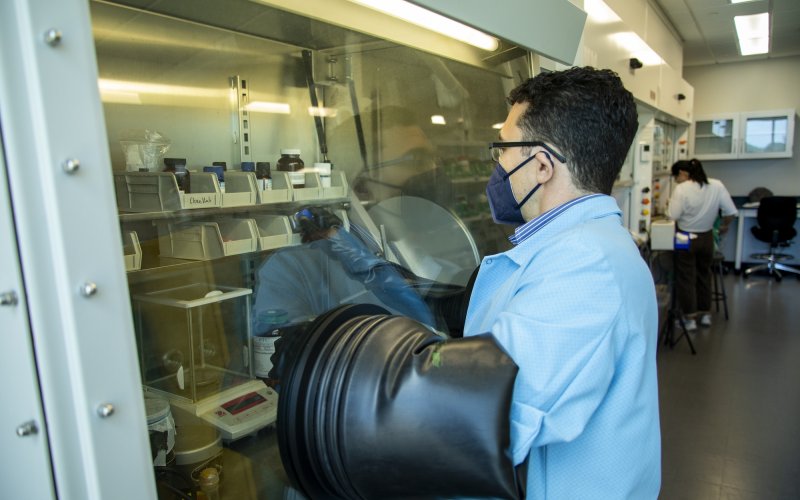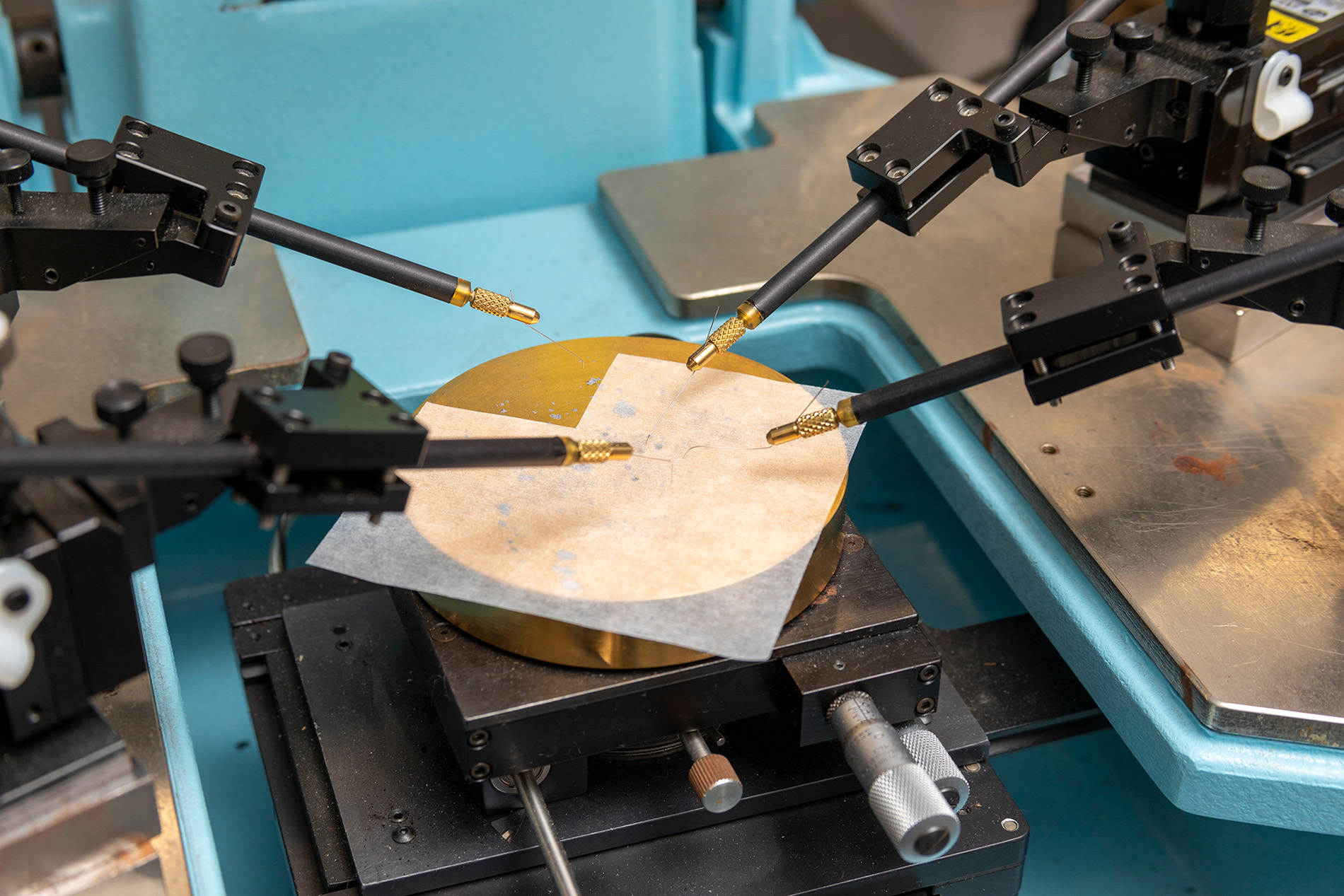UAlbany Chemist Partners on $300K Project to Improve Lithium-Ion Battery Recycling Methods

By Mike Nolan
ALBANY, N.Y. (Nov. 30, 2023) — The demand for battery power is surging as we buy more devices, gas prices climb higher and countries transition to alternative energy sources. A recent study published by Statista projects that global demand for batteries will increase tenfold by 2030.
In a future powered by batteries, lithium, a soft, silvery-white metal, is quickly becoming one of the most valuable commodities on the planet. Lithium-ion batteries are used in a wide range of electronic devices, such as smartphones, laptops, electric vehicles and large-scale energy storage systems. However, lithium is a finite material, and its extraction is both costly and has a negative environmental impact.
To help combat this problem, Jeremy Feldblyum, a chemist at the University at Albany, is partnering on a new National Science Foundation (NSF) early concept grant for exploratory research (EAGER) award, that will focus on improving lithium battery recycling methods.
The two-year, $300,000 project is co-led by Feldblyum and Doug Genna of Youngstown State University.
“Many of the metals used in modern rechargeable batteries are expensive and environmentally damaging to extract from the Earth, and some pose a geopolitical risk as well due to the locations from which we obtain them,” said Feldblyum, an assistant professor in UAlbany’s Department of Chemistry. “This award will allow us to develop new tools for recovering critical metals from spent lithium-ion batteries to limit the cost and other risks associated with the current battery manufacturing pipeline.”
“If successful, our work will lead to new discoveries across multiple disciplines of chemistry and materials science. It has the potential to fundamentally change where the United States gets it lithium,” added Genna. “Collaborative research programs like this are only possible with funding partners like the National Science Foundation, of which we are extraordinarily grateful for their support. We anticipate this is the beginning of a long partnership between two great research groups and universities.”
A Better Way to Recycle
While not everything in a lithium battery is recoverable, the majority of materials can be recycled. The recycling process is challenging though. The batteries are made up of many different parts that could explode if they're not disassembled carefully. Even when broken down successfully, the products aren't easy to reuse.
Feldblyum’s research group studies the chemical process by which battery metals can be dissolved in non-acidic solvents, and Genna’s research group studies the separation and purification of lithium.

With new NSF funding, Feldblyum will focus on the process of dissolving metals from battery waste, along with designing new solvents that are both effective and environmentally-friendly. Extracting lithium from the dissolved metals will be the focus of the Genna group, where they will design new materials called metal-organic frameworks that are both selective for lithium purification and stable under the challenging conditions used for recycling.
“Over the course of this work, we will discover new materials that can selectively capture lithium ions, which will be critical not only for battery recycling, but for establishing domestic sources of natural lithium as well,” Feldblyum said. “Furthermore, we will construct a better scientific understanding of solvents capable of dissolving critical metals. Ultimately, we develop solvents that are environmentally sustainable and can outcompete the extractive acids currently used in industry.
The UAlbany research team will also study the purification of non-lithium metals (such as cobalt, nickel and manganese) using electrochemistry, where an electrical current can drive the selective plating of metal ions from the recycling mixture.
Funding will be split evenly between the two partners throughout the project.
“Current sources of lithium, cobalt and other battery-relevant metals are inadequate to meet the projected demand for batteries,” Feldblyum said. “Recycling will play a critical role in allowing the battery supply to keep up.”
Student Researchers
Two former UAlbany graduate students, Mengwen Yan and Fernanda Giongo Fernandes, laid the groundwork to secure funding from the NSF before graduating earlier this year. The funding will support newly recruited graduate and undergraduate researchers at both institutions.
Students will lead laboratory experimentation and data analysis, with mentorship from Feldblyum and Genna. They will also share project results at conferences and in scientific publications.
Future work will aim to broaden the scope of the scientific tools developed in this project, as well as demonstrate the viability to commercialize them.




